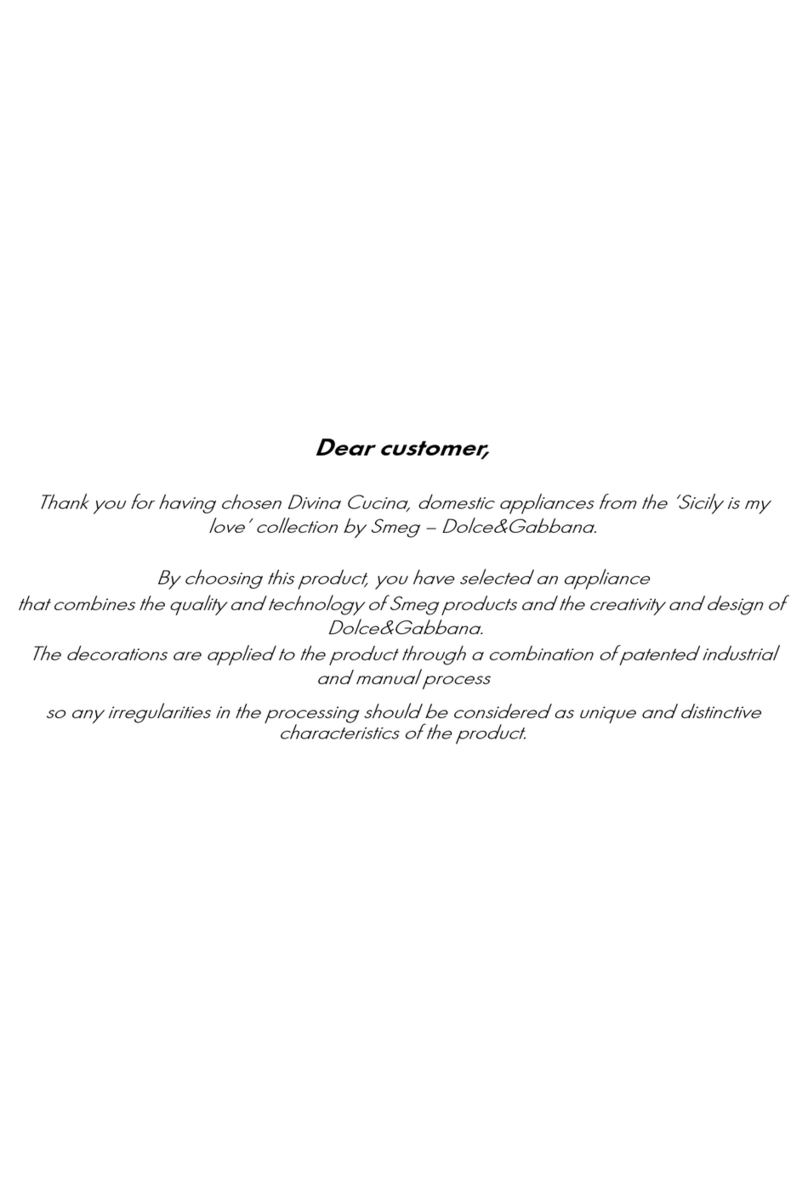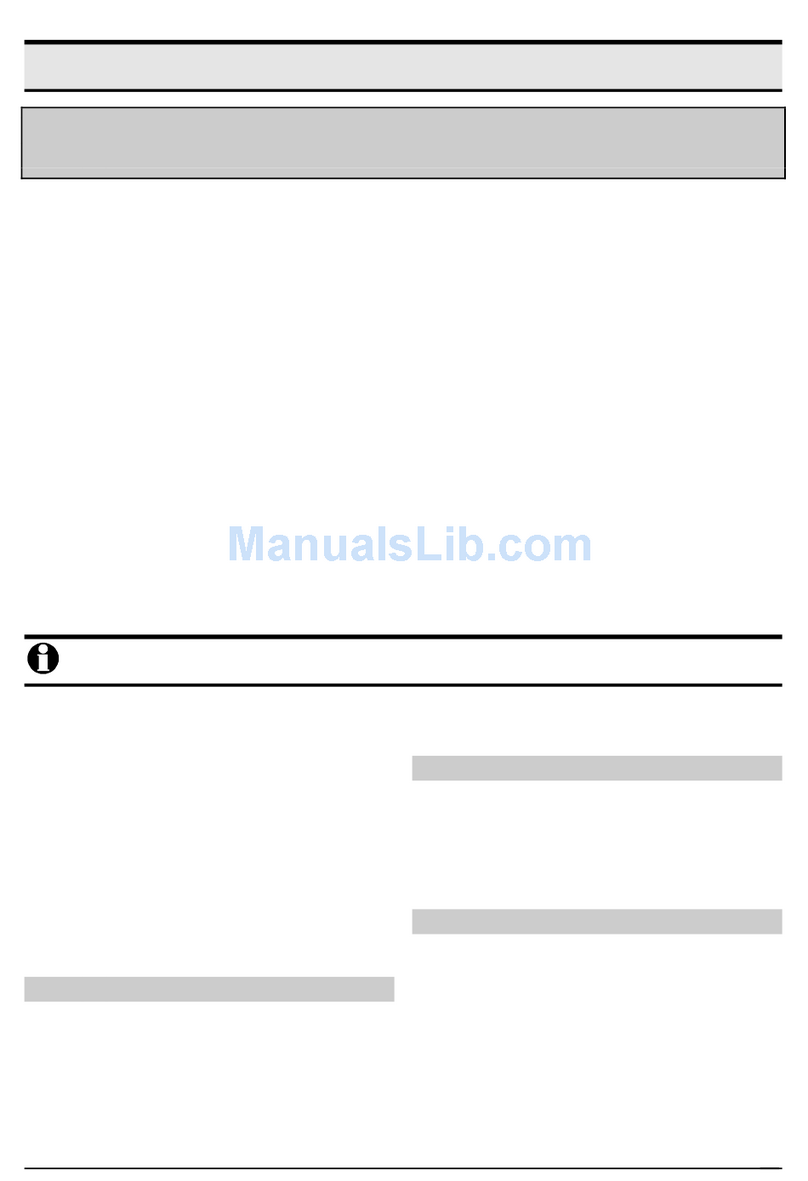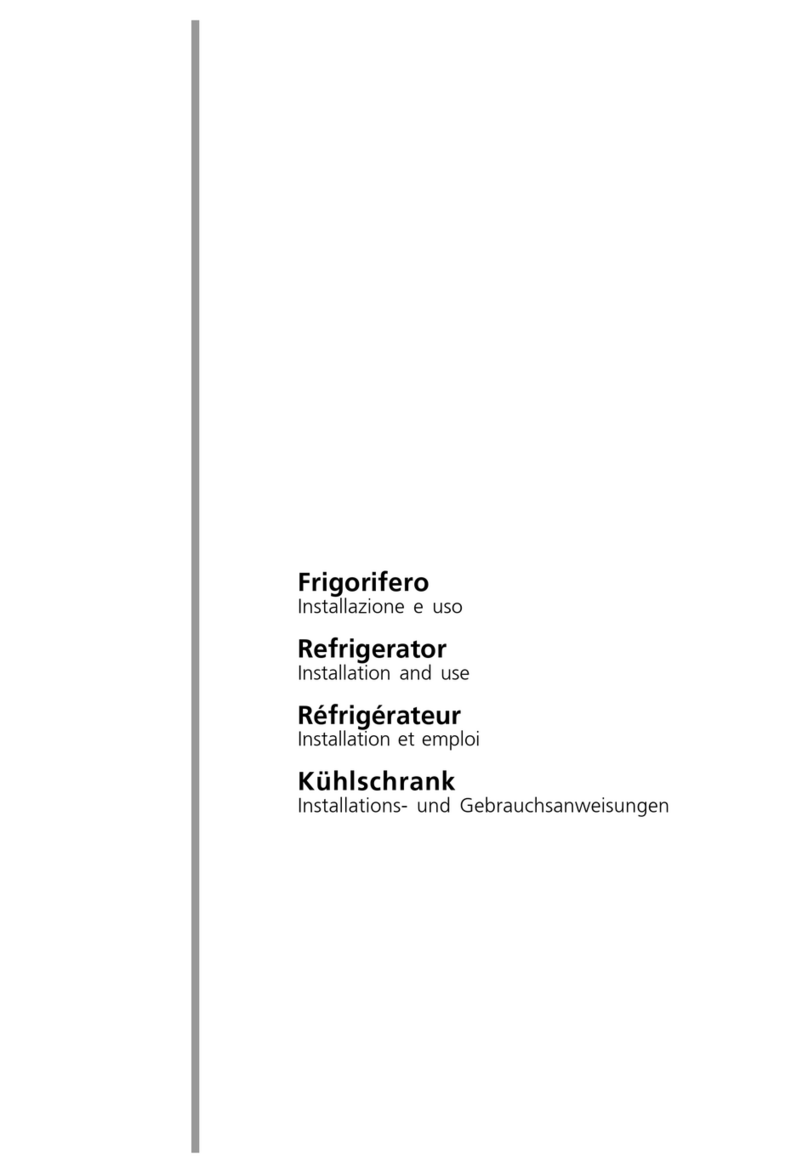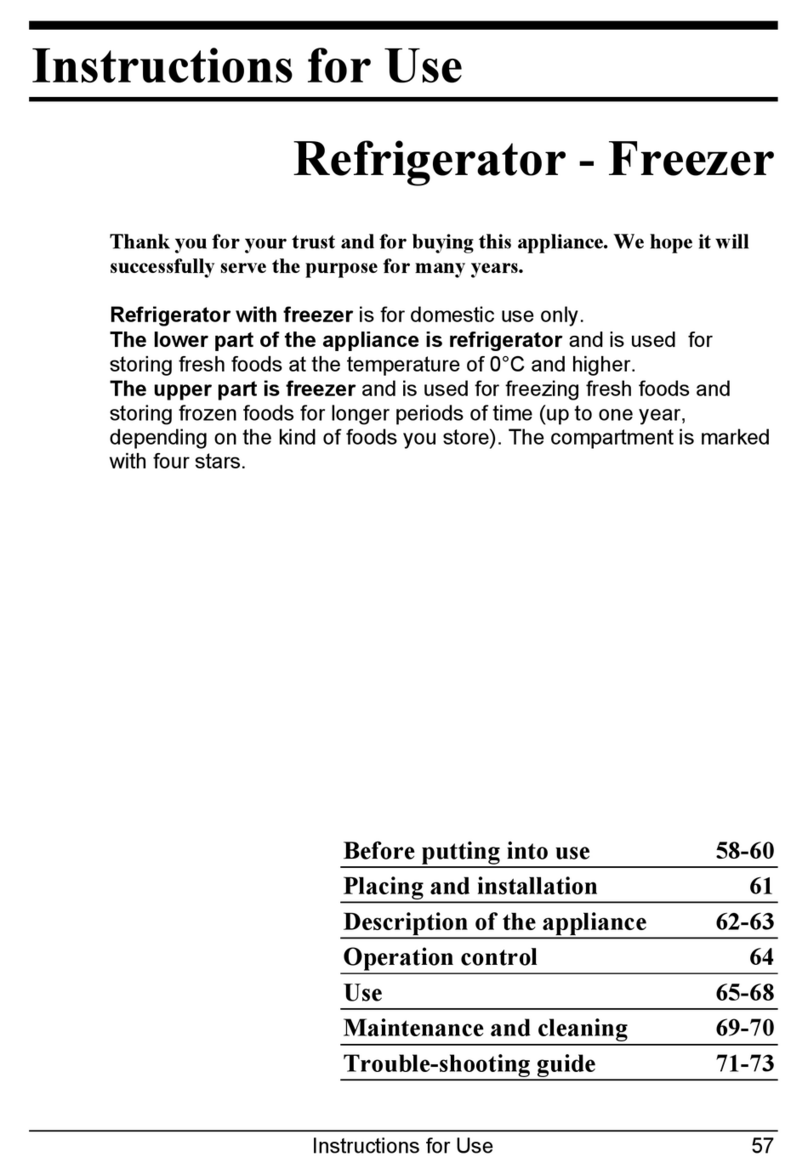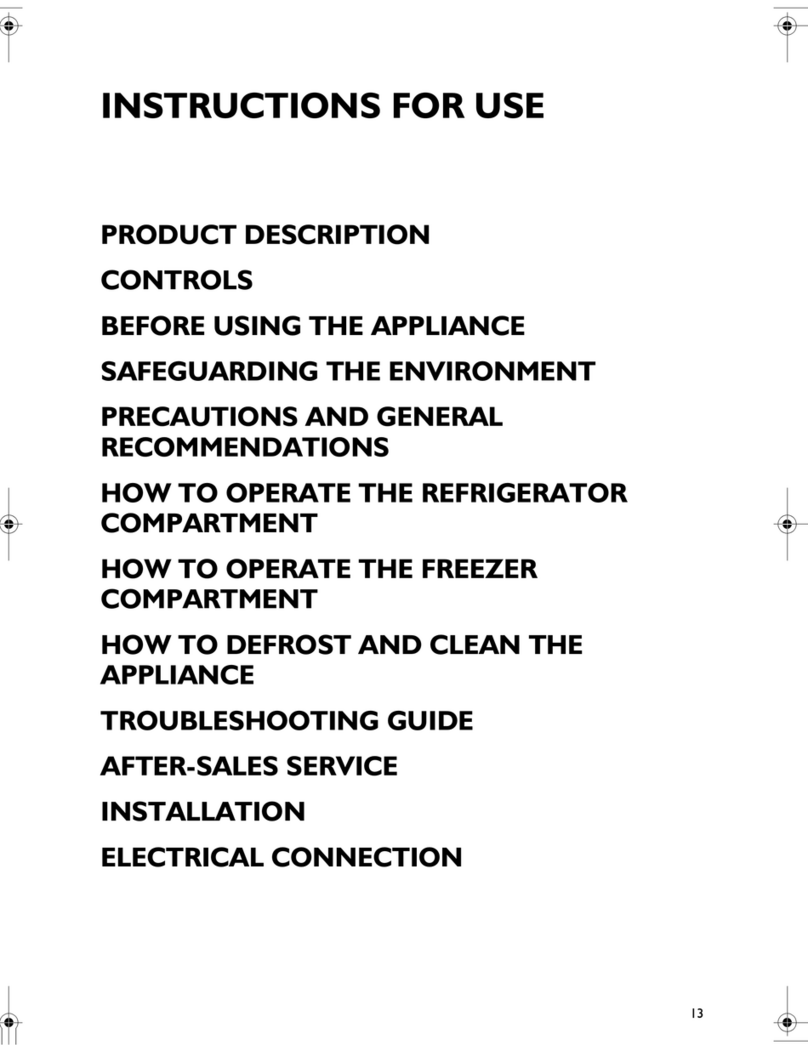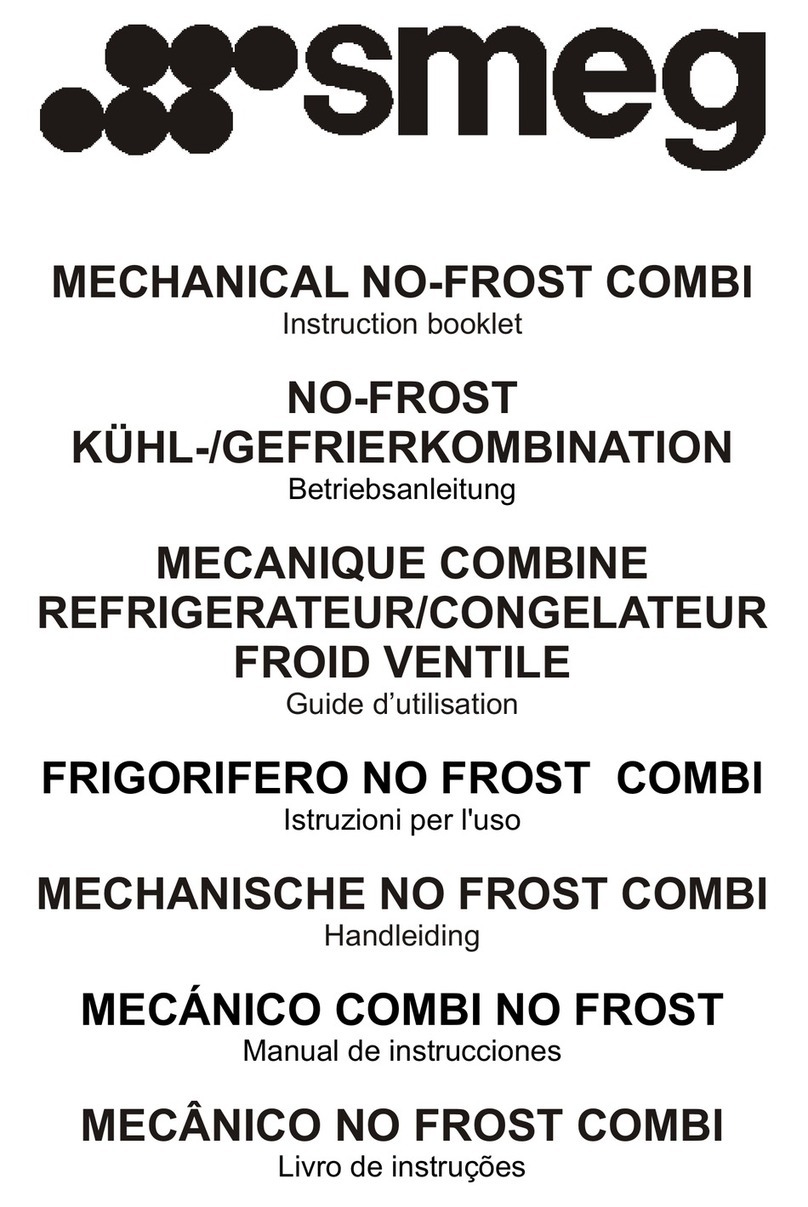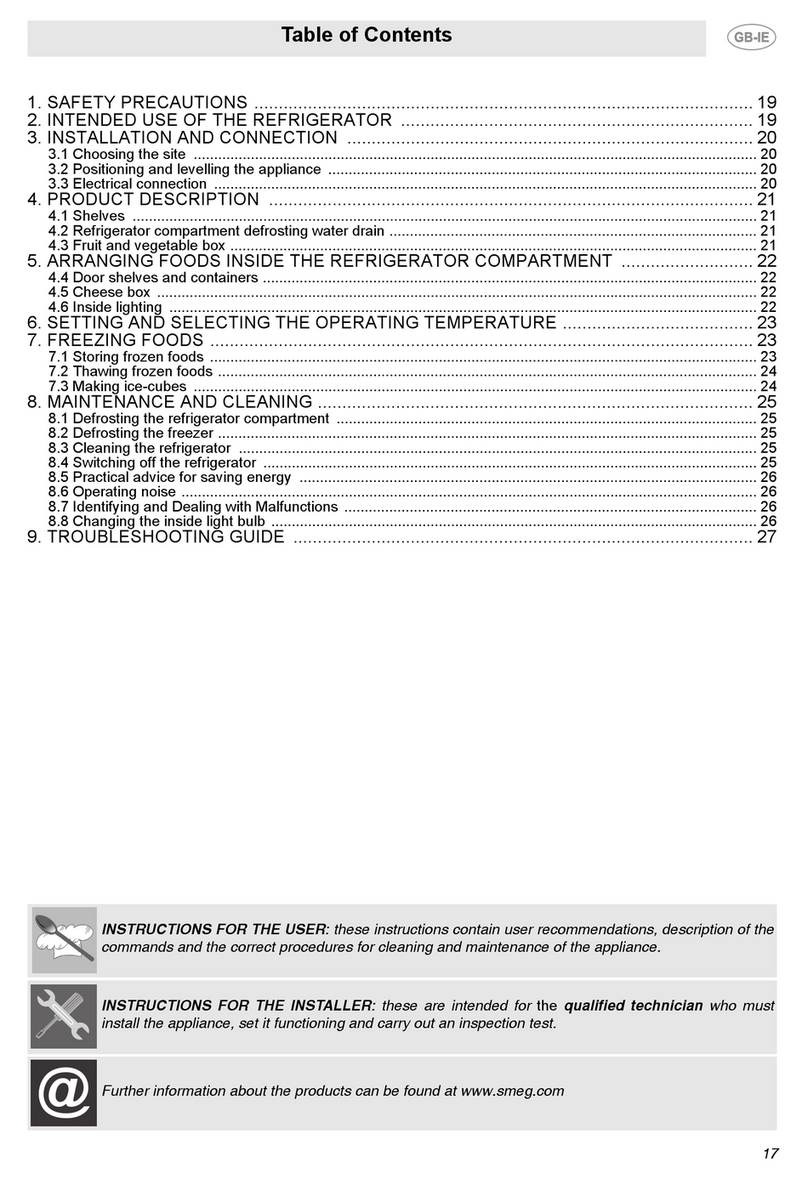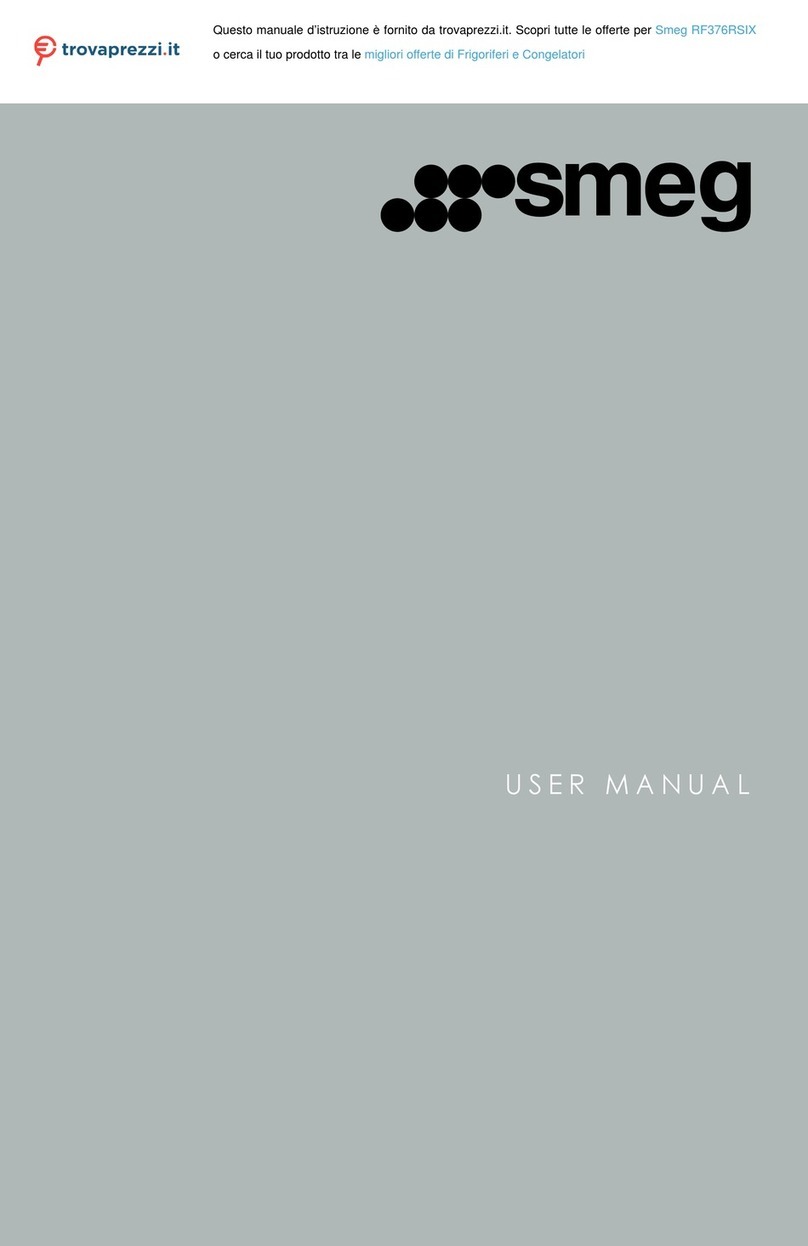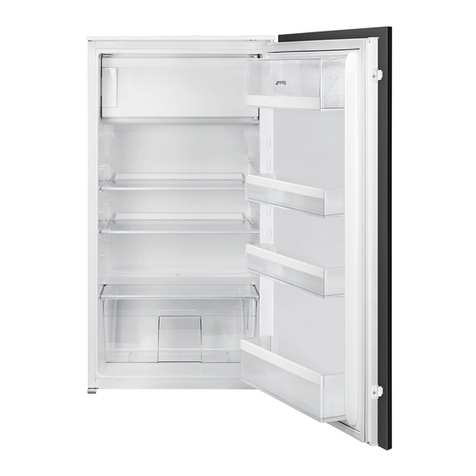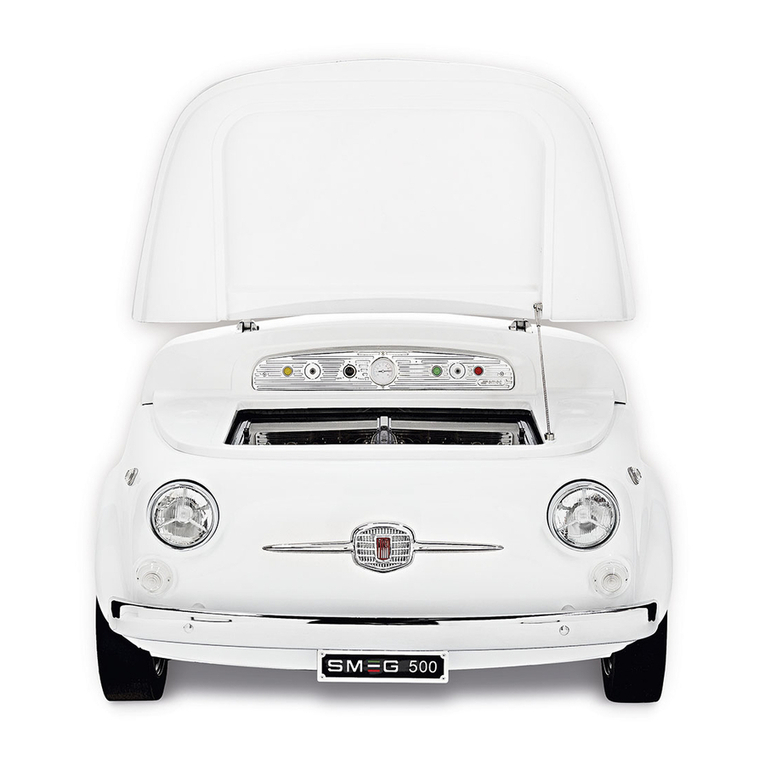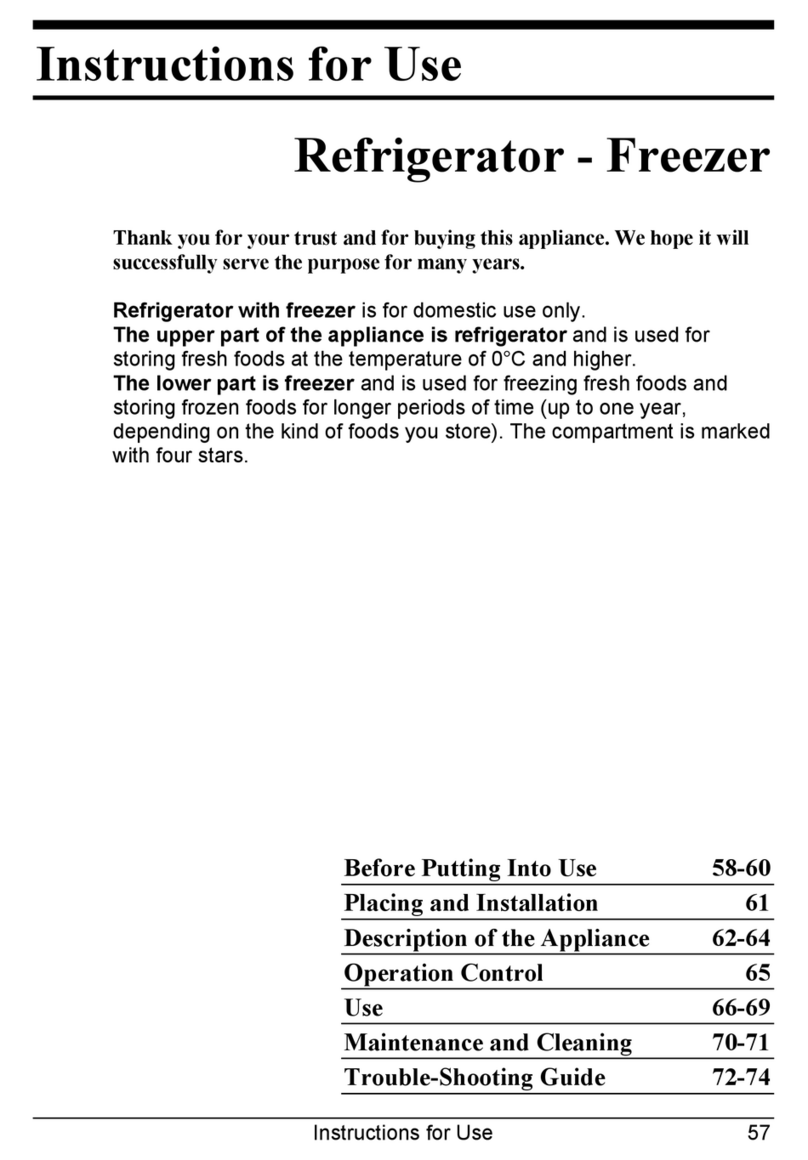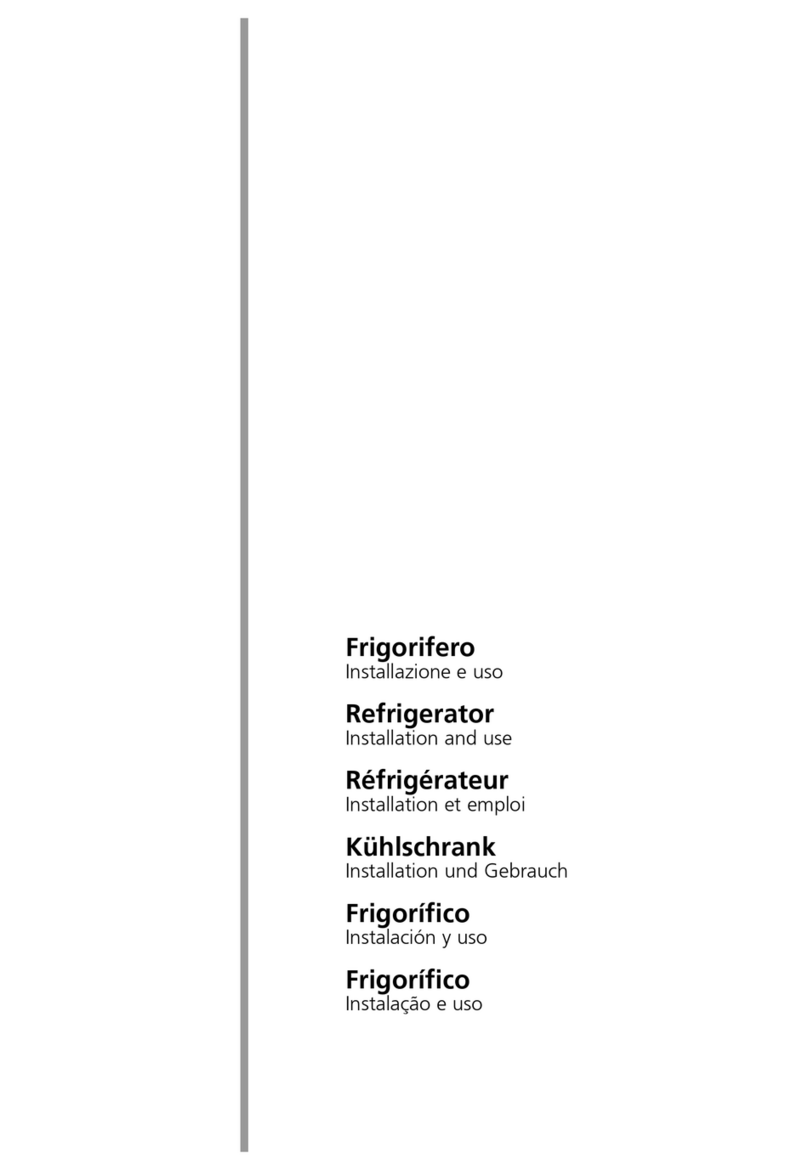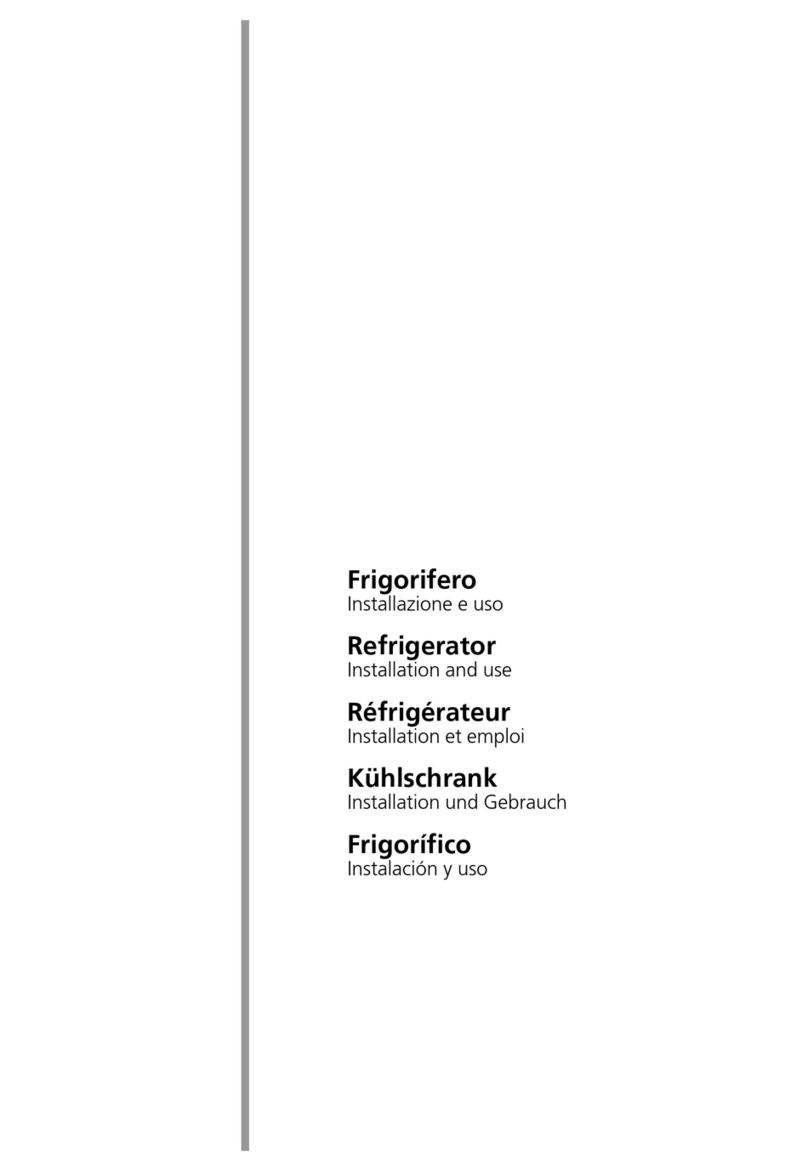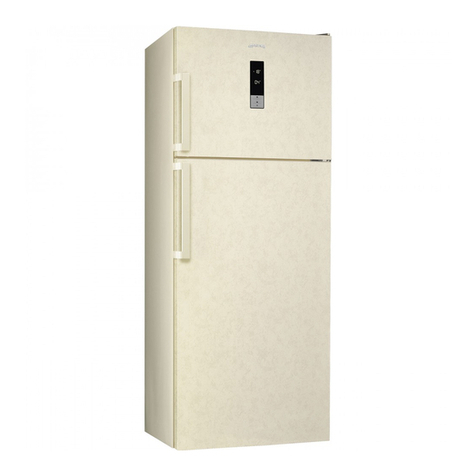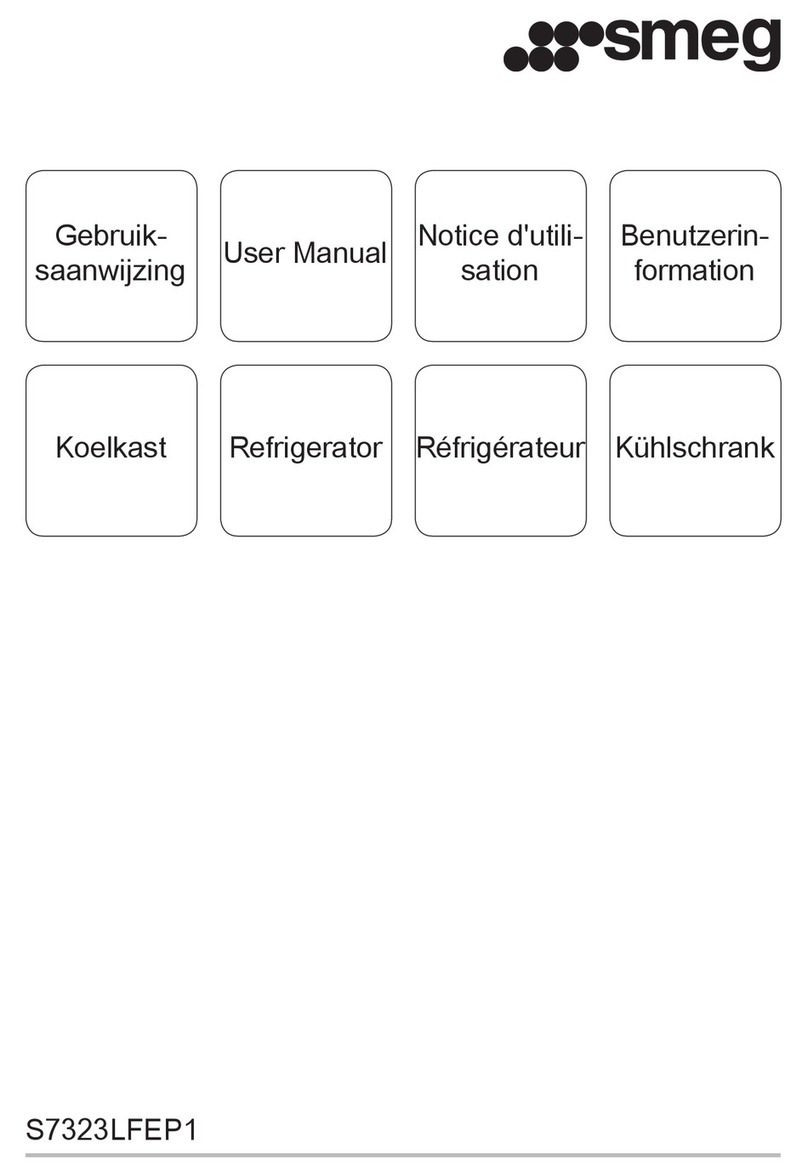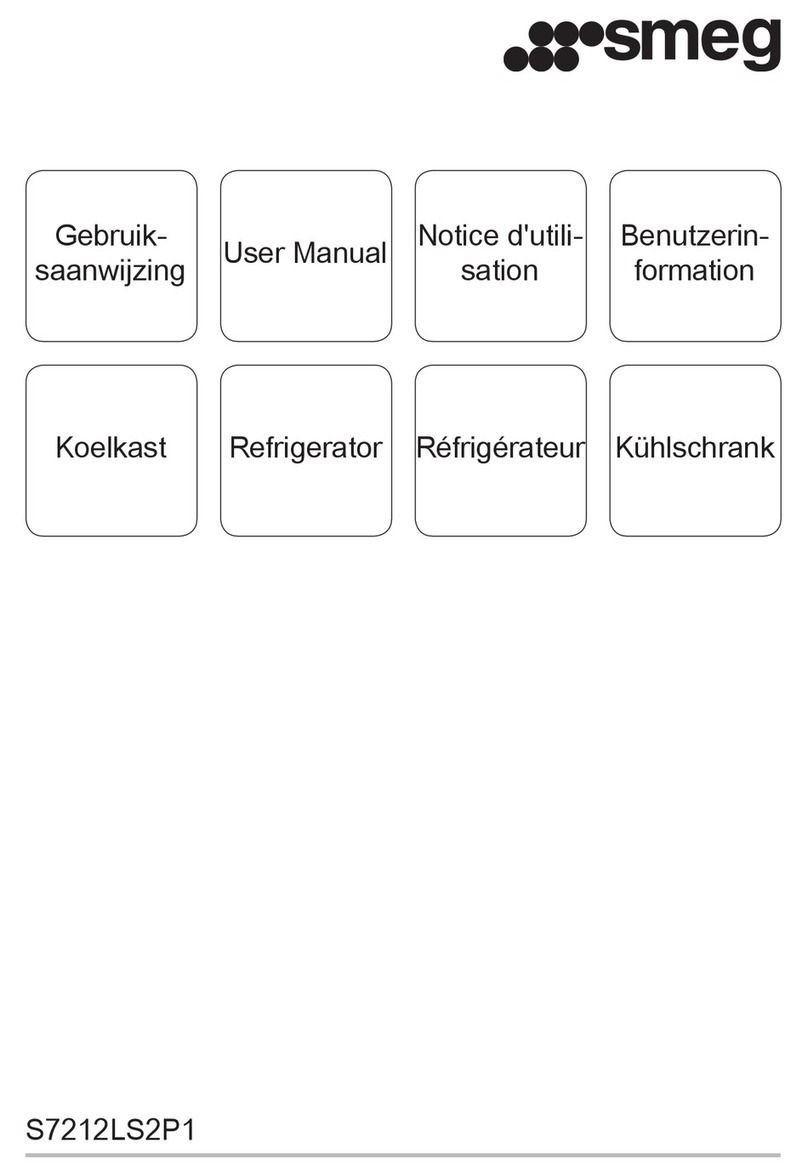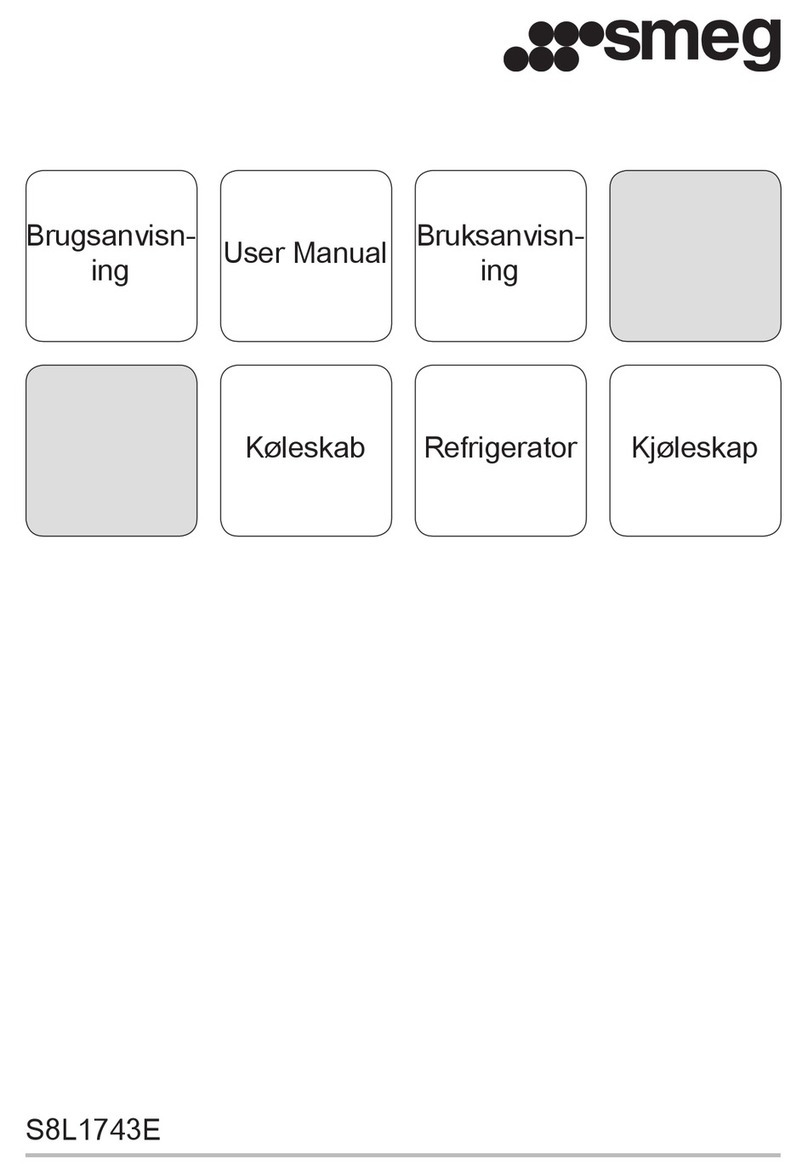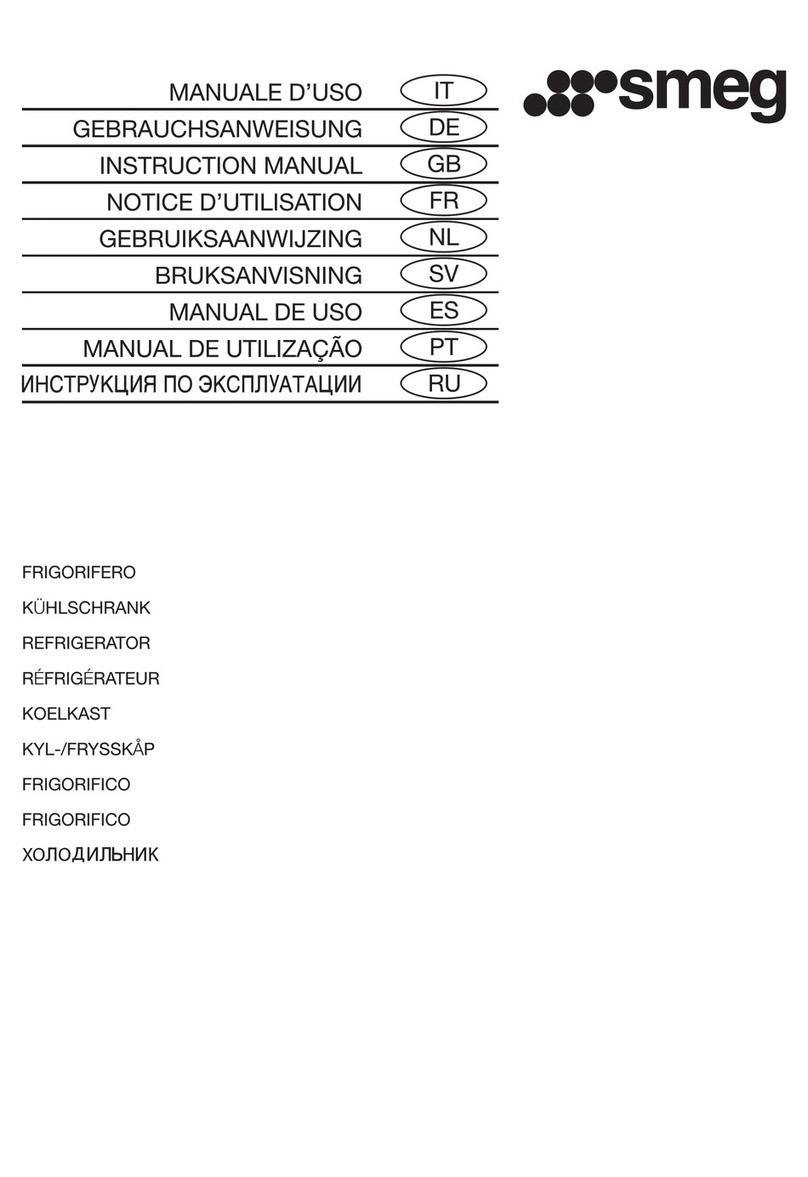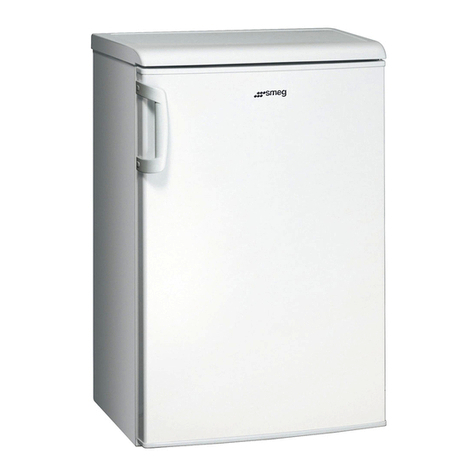
Instructions
6
• Do not damage the power cord
when moving the appliance.
• Have the wall outlet and circuit
checked by a qualified electrician
to make sure the outlet is properly
grounded.
• Unplug the refrigerator before
servicing.
• Only qualified service personnel
should perform repairs. Service
personnel must disconnect the
power supply before servicing this
unit.
• Never unplug an appliance by
pulling the power cord. Always
grip the plug firmly and pull
straight out from the outlet to
prevent damaging the power
cord.
• Do not damage or puncture
refrigerant tubing.
• Do not damage the refrigerant
circuit.
• Do not attempt to repair or
replace any part of this appliance
unless specifically recommended
in this manual. Any other servicing
should be done by a qualified
technician.
• Do not scatter the packing
materials. Sort the various items of
waste and take them to the
nearest specialized waste
collection facility.
• Do not use sharp instruments,
rubbing alcohol, flammable fluids,
or abrasive cleaners to remove
tape glue. Wipe with warm water
only.
• Keep ventilation openings, in the
appliance enclosure or in the built-
in structure, clear of obstruction.
• Do not use mechanical, electrical
or chemical products other than
those recommended by the
manufacturer to speed up the
defrosting process.
1.5 Installation cautions
• Leave the appliance standing
vertically for at least two hours
before turning it on for the first
time.
• Leave sufficient space around the
appliance and install it on a flat
surface.
CAUTION
